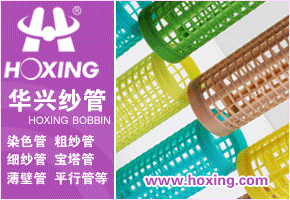S’Lanka becomes attractive textile investment destination
The Sri Lankan apparel industry spends more than 60 percent of the amount it generates through exports, on imports of key raw materials like yarn and fabrics.
This presents an opportunity for the highly developed textile industry in neighbouring countries like India and Pakistan to invest in the Sri Lankan textile sector.
Of the US $4 billion it generated through clothing exports, the island imported raw materials to the tune of $2.5 billion.
The Sri Lankan garment industry has established itself as a global supplier of high-end fashion clothing to retailers like, which has helped it establish itself as a high-end garment producer of garments servicing leading international brands.
These global buyers include well-known retailers and brands as Victoria’s Secret, Marks and Spencer, Nike, Tommy Hilfiger, Abercrombie and Fitch, Gap, Ann Taylor, etc.
In the budgetary announcement made in November this year, the Sri Lankan President abolished duties on yarn imports from January 2012.
In the budget, President Rajapaksa has also proposed removing customs duty and value-added tax imposed on textile machinery and other equipment imported to modernise the textile sector.
Other proposals include, extending long-term tax holidays for new investments and reducing income tax on large investments in existing textile mills.
In order to meet the increase in demand from the domestic markets, the government has even permitted deemed garment exporters to sell up to 25 percent of their production in local markets, subject to that the rest of the 75 percent will be exported.
This measure will help in restricting imports of clothing and in turn save precious foreign exchange.
This presents an opportunity for the highly developed textile industry in neighbouring countries like India and Pakistan to invest in the Sri Lankan textile sector.
Of the US $4 billion it generated through clothing exports, the island imported raw materials to the tune of $2.5 billion.
The Sri Lankan garment industry has established itself as a global supplier of high-end fashion clothing to retailers like, which has helped it establish itself as a high-end garment producer of garments servicing leading international brands.
These global buyers include well-known retailers and brands as Victoria’s Secret, Marks and Spencer, Nike, Tommy Hilfiger, Abercrombie and Fitch, Gap, Ann Taylor, etc.
In the budgetary announcement made in November this year, the Sri Lankan President abolished duties on yarn imports from January 2012.
In the budget, President Rajapaksa has also proposed removing customs duty and value-added tax imposed on textile machinery and other equipment imported to modernise the textile sector.
Other proposals include, extending long-term tax holidays for new investments and reducing income tax on large investments in existing textile mills.
In order to meet the increase in demand from the domestic markets, the government has even permitted deemed garment exporters to sell up to 25 percent of their production in local markets, subject to that the rest of the 75 percent will be exported.
This measure will help in restricting imports of clothing and in turn save precious foreign exchange.
转载本网专稿请注明出处“中国纺织网”
编辑:纺织网







